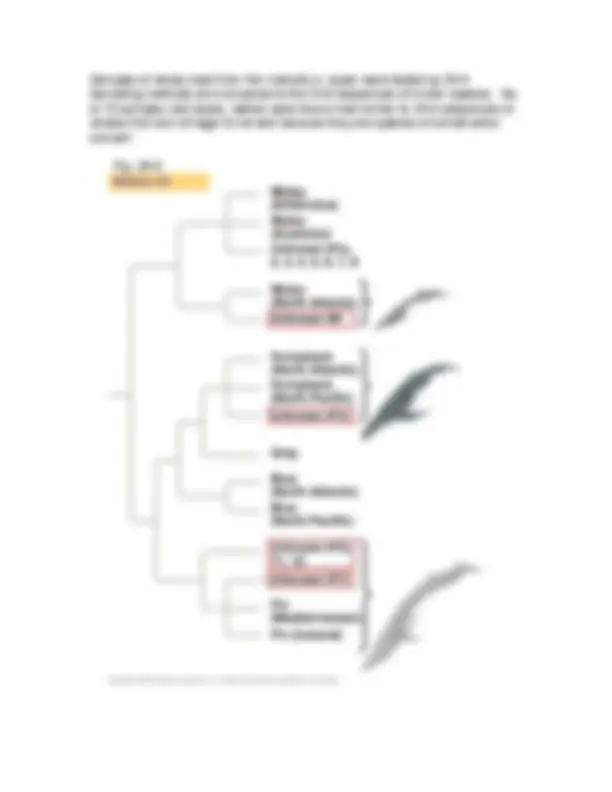



Study with the several resources on Docsity

Earn points by helping other students or get them with a premium plan


Prepare for your exams
Study with the several resources on Docsity

Earn points to download
Earn points by helping other students or get them with a premium plan
Community
Ask the community for help and clear up your study doubts
Discover the best universities in your country according to Docsity users
Free resources
Download our free guides on studying techniques, anxiety management strategies, and thesis advice from Docsity tutors
Material Type: Notes; Professor: Duvall; Class: Fundamentals of Biology II; Subject: BIOLOGICAL SCIENCES; University: Northern Illinois University; Term: Unknown 2009;
Typology: Study notes
1 / 3

This page cannot be seen from the preview
Don't miss anything!


Phylogeny is the study of evolutionary history. Such histories are often diagrammed as “trees” (Fig. 26.2). The trees consist of branches connected at nodes. Branches reflect the persistence of species through time. Nodes mark the point at which new species originated. A tree may have a “ root ,” which is the node in a tree that represents the ancestor of the rest of the tree. Phylogenies are used in different areas of biology: Origins---how extinct hominids were related to humans; Medicine---how pathogens evolve; Agriculture---how insect pests mutate when selected by bioengineered crops; Conservation---how to determine if products are being marketed from illegally harvested species of animals (Fig. 26.6). Homologies are used to determine the order of nodes in a tree. Homologous characters are those that are shared between two species because they were inherited from the common ancestor of those two species. Convergent Evolution is coincidental similarity between unrelated species due to natural selection of similar adaptations in similar environments. For example, the marsupial mole resembles North American moles (which are placental mammals; Fig. 26.7). However, their smiliarities are not homologies because these animals are known to be distantly related because of many other differences between them, such as reproductive and biogeographic differences. Thus, the coincidental similarities are said to be analogies. Homology is easier to determine when DNA sequences are used (Fig. 26.8) because: